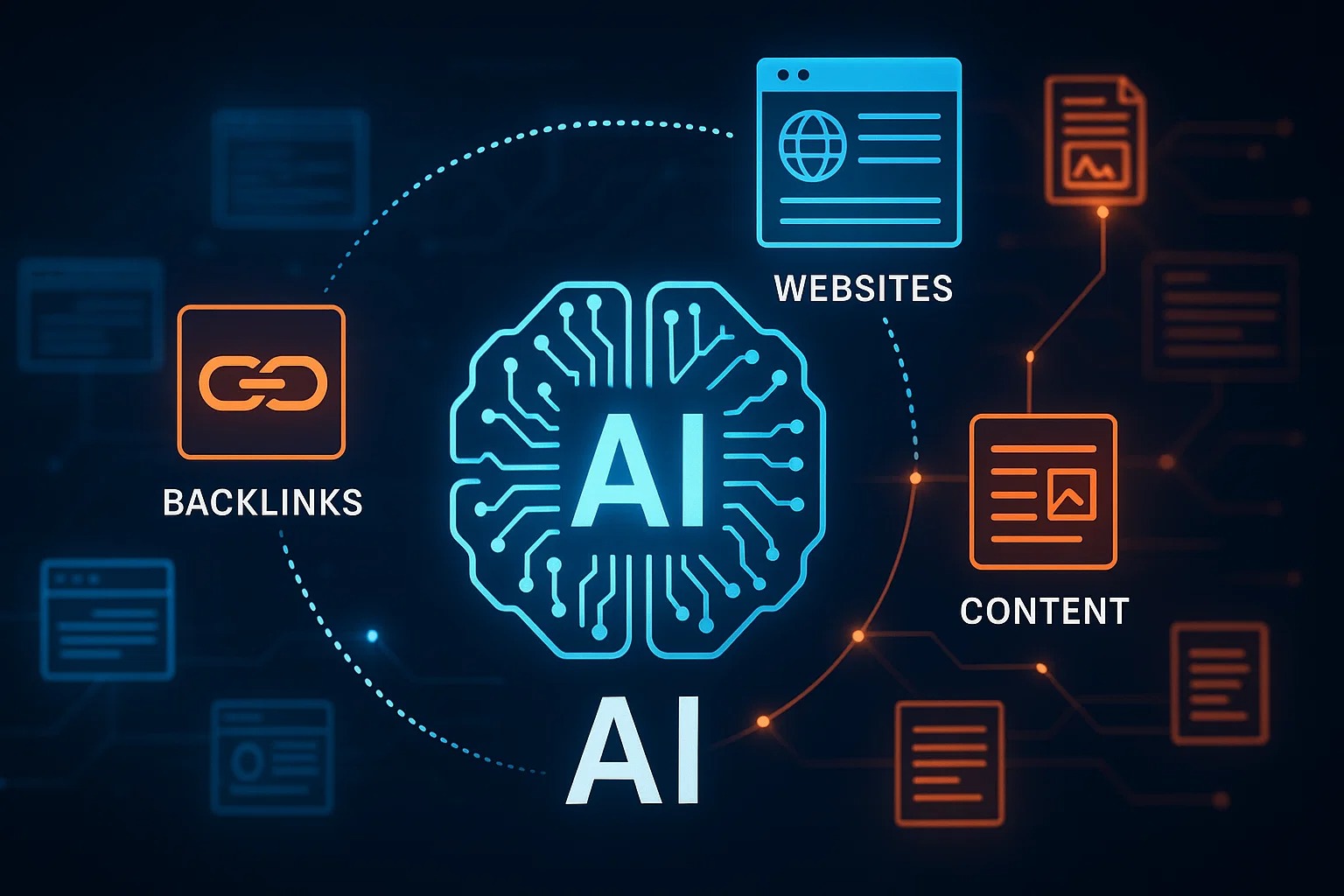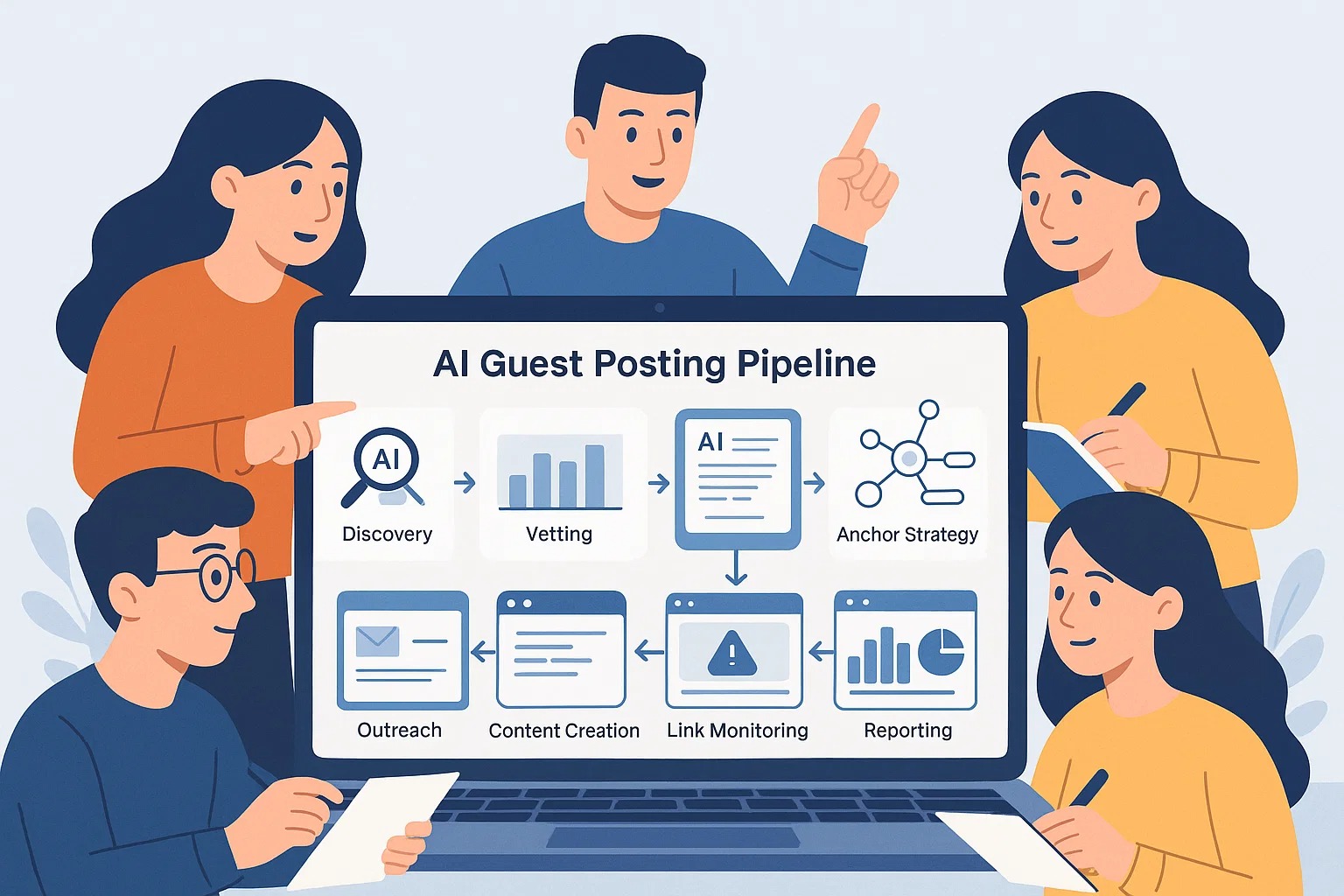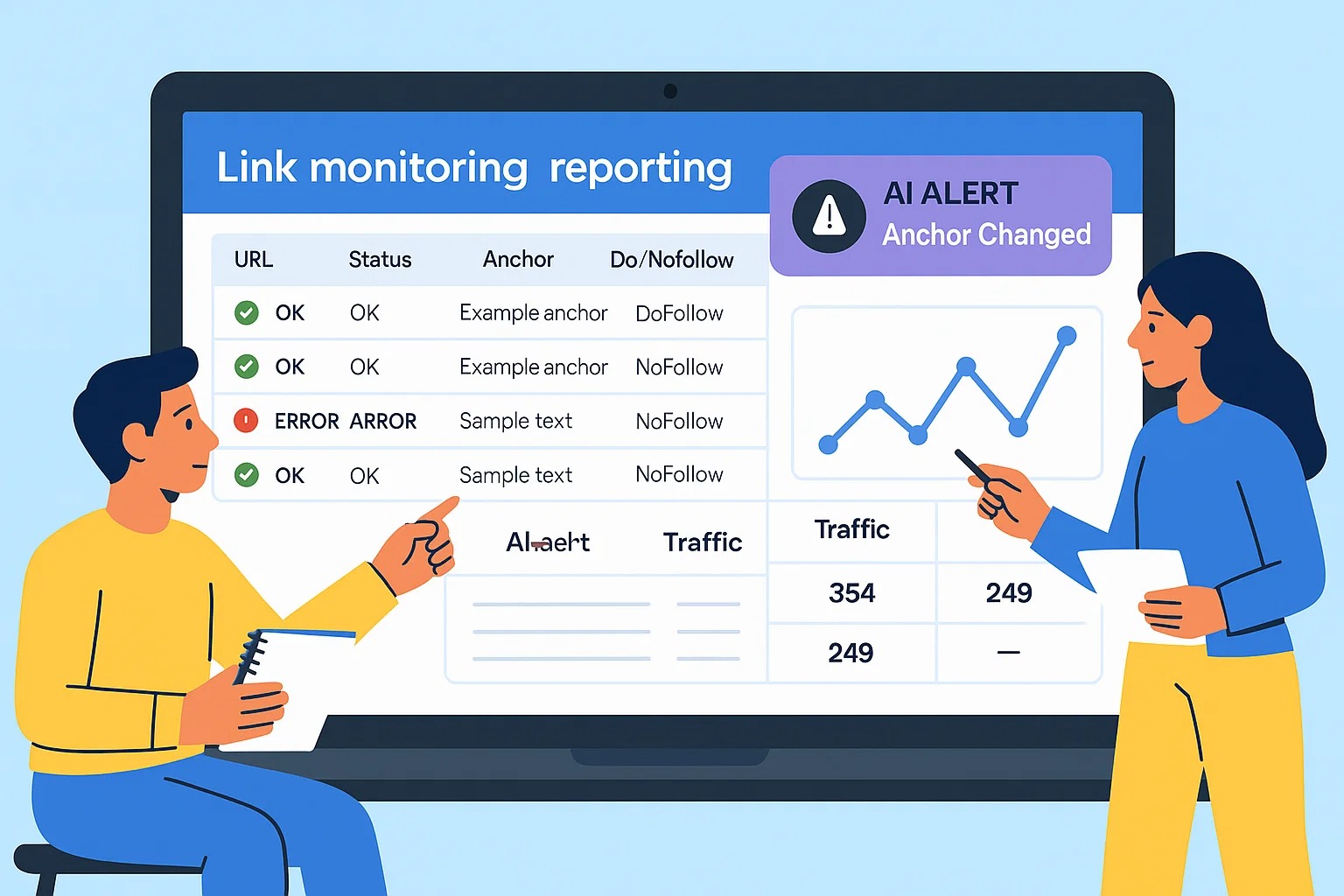How AI Is Changing the Future of Guest Posting
The world of guest posting, once driven by manual outreach and time-intensive processes, is undergoing a radical transformation with the advent of Artificial...

The world of guest posting, once driven by manual outreach and time-intensive processes, is undergoing a radical transformation with the advent of Artificial Intelligence (AI). As search engine algorithms evolve, AI is now becoming an integral force in optimizing and scaling guest posting strategies across discovery, vetting, outreach, content
creation, link monitoring, and performance reporting.
This article explores the technical and strategic transformation brought by AI, backed by case studies, structured methodologies, and industry best practices.
Guest Posting: Traditional Definition & Objectives
Guest Posting is the practice of writing and publishing an article on someone else's website to:
Build backlinks (off-page SEO)
Increase brand visibility
Drive referral traffic
Establish thought leadership
Limitations of Traditional Guest Posting
Challenge | Issue |
|---|---|
Manual Process | Website Discovery using Google search operators, forums, spreadsheets |
Vetting Domains | Manual DR/DA checks, niche relevancy assessment |
Outreach | Cold emails, low response rates |
Content Creation | Human-written only, time-consuming |
Tracking Results | Difficult to attribute results, error-prone |
Where AI Steps In
AI augments or automates every phase of the guest posting pipeline:
Phase | AI Integration |
|---|---|
Discovery | AI web crawlers, contextual intent classification |
Vetting | NLP-driven content analysis, AI-based authority scoring |
Outreach | Predictive personalization, AI-powered email engines |
Content Creation | LLMs (like GPT-4), fine-tuned for SEO + topic intent |
Anchor Text Strategy | Semantic mapping, keyword co-occurrence analysis |
Link Monitoring | AI-based change detection, citation tracking |
Performance Reporting | AI-driven attribution modeling, ROI prediction |

AI-Powered Guest Post Discovery
Techniques Used
AI Crawlers: Use machine learning to classify websites by topic, quality, and outreach potential.
Semantic Matching: Embedding-based comparison of website content vs. target content (e.g., BERT, SBERT).
Topical Relevance Scoring: Scores sites not just by keywords but by semantic similarity.
Case Example:
A Rankar.ai agent uses an AI tool that evaluates 100,000+ domains and auto-ranks them by niche relevance (e.g., tech, fashion) and domain credibility. This saves approximately 90% of time in initial prospecting.
Domain Vetting with AI Authority Signals
Traditional SEO metrics (e.g., DR, DA) are now being supplemented or replaced with:
| AI-Augmented Equivalent |
|---|---|
Domain Rating (DR) | AI Domain Influence Score (trained on SERP behavior) |
Organic Traffic Estimate | AI Estimated True Value Traffic (multi-source validation) |
Spam Score | AI Toxicity Classification (based on link patterns, NLP) |
Tools & APIs
DataForSEO, Ahrefs API, OpenAI Embeddings
Custom models trained on SERP ranking behaviors
Personalized AI Outreach
Outreach response rates are drastically improved with:
AI-Generated Personalized Emails: Incorporate author name, post titles, pain points.
Language Fine-tuning: Emails tailored for tone (friendly, professional, urgent).
Predictive Outreach Windows: AI determines optimal send times based on open rates.
Diagram:
[Agent Input] → [Website Context] → [AI Email Generator] → [Sequencer + CRM]
Guest Post Content Creation with LLMs
Key Features
Keyword-Optimized Prompts: Trained prompts that reflect searcher intent and SERP structure
Context Ingestion: Input includes target URL, anchor text, niche, SERP competitors
Human-in-the-loop: Editor refines AI draft for tone, uniqueness, and compliance
Model Training Tips
Fine-tune on past high-performing posts
Include competitor analysis data in prompt context
Prompt Example:
"Write a 1200-word guest post targeting the keyword 'eco-friendly kilts' for a fashion blog with DR 70. Include H1, H2, CTA, internal links, and a conversational tone."
Anchor Text & Semantic Optimization
AI Suggests Anchor Text:
Based on entity recognition, keyword clustering, and SERP co-occurrence.
Avoid Over-Optimization: Uses semantic proximity rather than exact match only.
Old Approach | AI-Powered Strategy |
|---|---|
Exact-match | Semantic variation-based (LSI, NLP) |
Random selection | Intent-driven anchor mapping |
AI-Powered Link Monitoring & Reporting
Automated Link Checking: AI agents check for do-follow/nofollow, placement decay, or anchor changes.
Attribution Modeling: Match guest posts to traffic, engagement, and conversions using machine learning.
Dynamic Reporting: White-label, branded reports with dynamic charts + AI analysis.
Toolchain: Link Checker Bots + GA4 + Custom ML Model for Attribution

Future Trends: AI and Guest Posting in 2025+
Innovation | Impact |
|---|---|
Generative AI + Custom Brand Voice | On-brand guest post creation at scale |
AI Citation & Trust Scoring | AI Citation Score replacing DR/DA |
ChatGPT Search & AI SEO | Content structured for AI indexability (RAG) |
Multi-Language Guest Posting | LLM-based multilingual content generation |
Best Practices for AI-Driven Guest Posting
Human-in-the-Loop Always: Never publish raw LLM output.
Train Prompts with Specificity: Include topic, tone, competitor SERPs, desired format.
Use AI to Scale, Not Replace: AI handles grunt work, humans refine strategy.
Keep Data Privacy & Compliance in Check: Avoid Link Farms and Spam Traps: Let AI flag risky domains proactively.
